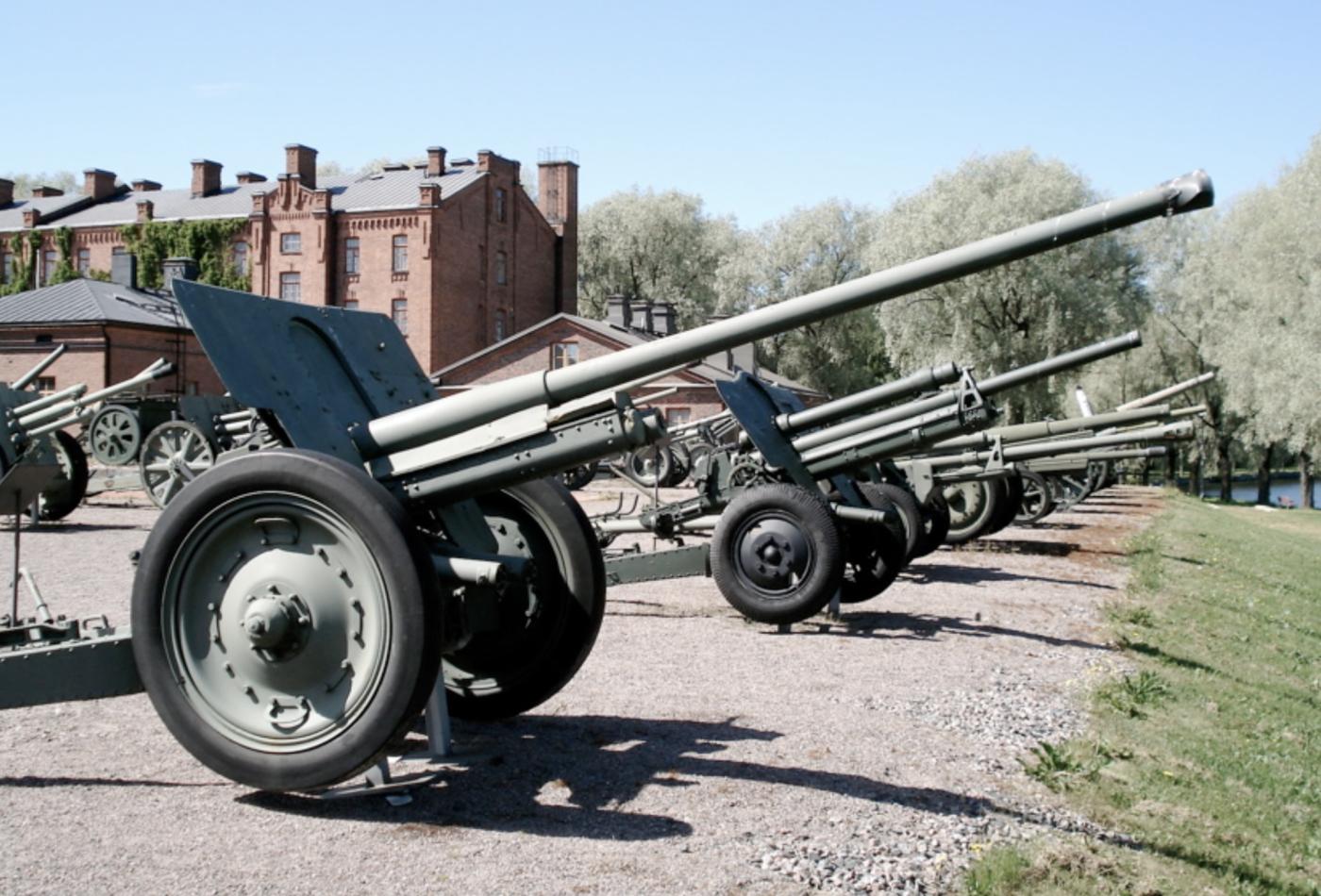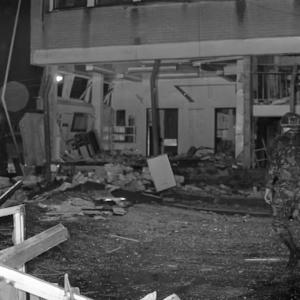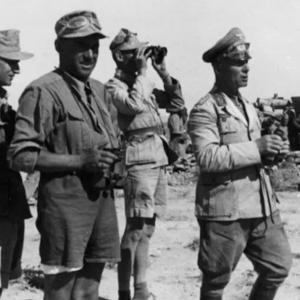
Russian 76mm artillery gun
During the Second World War, few artillery pieces became as iconic and widely used as the Soviet Union’s 76mm field guns. These guns formed the backbone of Soviet divisional artillery and were instrumental across the vast expanse of the Eastern Front. Among the most prominent of these guns were the 76 mm divisional gun M1942 (ZiS-3), the M1939 (USV), and the earlier M1936 (F-22). Their development, deployment, and battlefield performance illustrate the evolution of Soviet artillery doctrine and industrial strategy during the war years.
The most significant of these weapons was the ZiS-3, officially designated the 76 mm divisional gun M1942. It was designed by the Soviet engineer Vasily Grabin and his team at Artillery Factory No. 92 in Gorky. What made the ZiS-3 revolutionary was not just its battlefield performance but its industrial efficiency. The gun combined the barrel of the earlier USV with the lighter and more mobile carriage of the ZiS-2 57 mm anti-tank gun. A muzzle brake was added to manage recoil, which allowed for a much lighter carriage without sacrificing firepower. This innovation enabled rapid mass production at a time when the Soviet Union desperately needed efficient, cost-effective weapons.
The ZiS-3 entered service in 1942 and quickly became the most produced field gun of the entire war, with more than 103,000 units manufactured by the end of 1945. Its maximum range was approximately 13.3 kilometers, and it had a muzzle velocity of around 680 meters per second. The rate of fire could reach up to 25 rounds per minute, an impressive feat for a weapon of its caliber. Its accuracy, reliability, and ease of use made it extremely popular with Soviet troops, while its light weight made it easier to maneuver across difficult terrain compared to earlier guns.
The gun’s ammunition included a wide variety of shells. High explosive (HE) rounds were the most common and were used for engaging infantry and fortifications. Armor-piercing high explosive (APHE) rounds provided anti-tank capabilities, while HEAT (high-explosive anti-tank) shells gave it the ability to defeat armor at any range. There were also shrapnel, smoke, incendiary, and high-velocity armor-piercing (HVAP) shells. The APHE rounds could penetrate approximately 69 mm of armor at 500 meters, while HVAP rounds could penetrate over 90 mm at the same range. The HEAT shells, being dependent on chemical rather than kinetic energy, could penetrate up to 120 mm of armor regardless of distance, although accuracy declined at longer ranges.
In combat, the ZiS-3 proved highly versatile. It was used both as a field gun and an anti-tank weapon. It was standard issue in Soviet rifle divisions, often deployed in batteries of four or more guns. The gun was also mounted on the SU-76 self-propelled gun, further increasing its utility on the battlefield. ZiS-3s played a vital role in all major Soviet offensives, including the defense of Moscow, the grinding street battles of Stalingrad, the tank-dominated clash at Kursk, and the final drive into Berlin. Many captured examples were put into service by the Germans under the designation *blocked text* 288(r), a testament to the weapon’s effectiveness.
Before the ZiS-3 became widespread, the Red Army relied on the M1939 USV, another 76mm divisional gun designed by Grabin’s team. It entered production in 1939 and remained in service through the early years of the war. Approximately 9,800 units were built before production ceased in 1942 in favor of the more efficient ZiS-3. The USV was heavier than the ZiS-3 and less economical to produce, but it was still a capable and reliable artillery piece.
The USV had similar ballistic characteristics, with a maximum range of 13.3 kilometers and a muzzle velocity of around 680 meters per second. Its rate of fire was slightly lower, averaging around 15 rounds per minute. It fired the same family of 76.2 mm shells as the ZiS-3, making logistics easier for Soviet forces. The USV was deployed in large numbers during the early stages of the German invasion, including during the Battle of Leningrad and the defense of Moscow. Despite its eventual replacement, it remained in service throughout the war, especially in secondary theaters or in the hands of Soviet allies and partisans.
An earlier iteration in this lineage was the M1936 F-22, another 76mm field gun developed at Factory No. 92. Entering production in 1937, about 2,900 of these guns were produced by 1939. The F-22 was an ambitious design that attempted to bridge the gap between field and anti-aircraft artillery. It featured a high elevation angle and was originally intended to fire a wide variety of munitions. However, this ambition led to a weapon that was overly complex, heavy, and expensive to manufacture. It also lacked sufficient anti-tank capabilities at a time when German armor was becoming increasingly formidable.
The F-22 had a maximum range of around 14 kilometers and a muzzle velocity of approximately 710 meters per second. It could fire around 15 rounds per minute. Its shells were initially longer and heavier, but most guns were later modified to accept the same standard 76.2 × 385 mm R rounds as later Soviet artillery. After the German invasion in 1941, many captured F-22s were converted by the Wehrmacht into the Pak 36(r), a potent anti-tank gun chambered for the larger German 75 mm round, which significantly increased their armor penetration.
Aside from these main divisional guns, the Soviet military also employed several specialized 76 mm artillery types. The 76 mm regimental gun M1927, for example, was a shorter-range weapon used primarily for direct fire support at the battalion and regimental level. Over 18,000 of these were produced between 1928 and 1943, with many still in use by the outbreak of war. These guns had a maximum range of just over 4 kilometers and were used effectively in close infantry support roles.
There was also the M1943 regimental gun, a more modernized version of the earlier design, with improved mobility and slightly better range. Additionally, the 76 mm mountain gun M1938 was employed in mountainous regions and could be disassembled and carried by pack animals. Its lighter weight and modularity made it ideal for use in the Caucasus and other difficult terrain.
Throughout the war, 76 mm artillery guns remained an essential part of Soviet military operations. They were praised not only for their effectiveness but also for the remarkable industrial efficiency with which they were produced. The combination of good ballistic performance, versatility, and mass production made these guns one of the most successful artillery systems of World War II.










